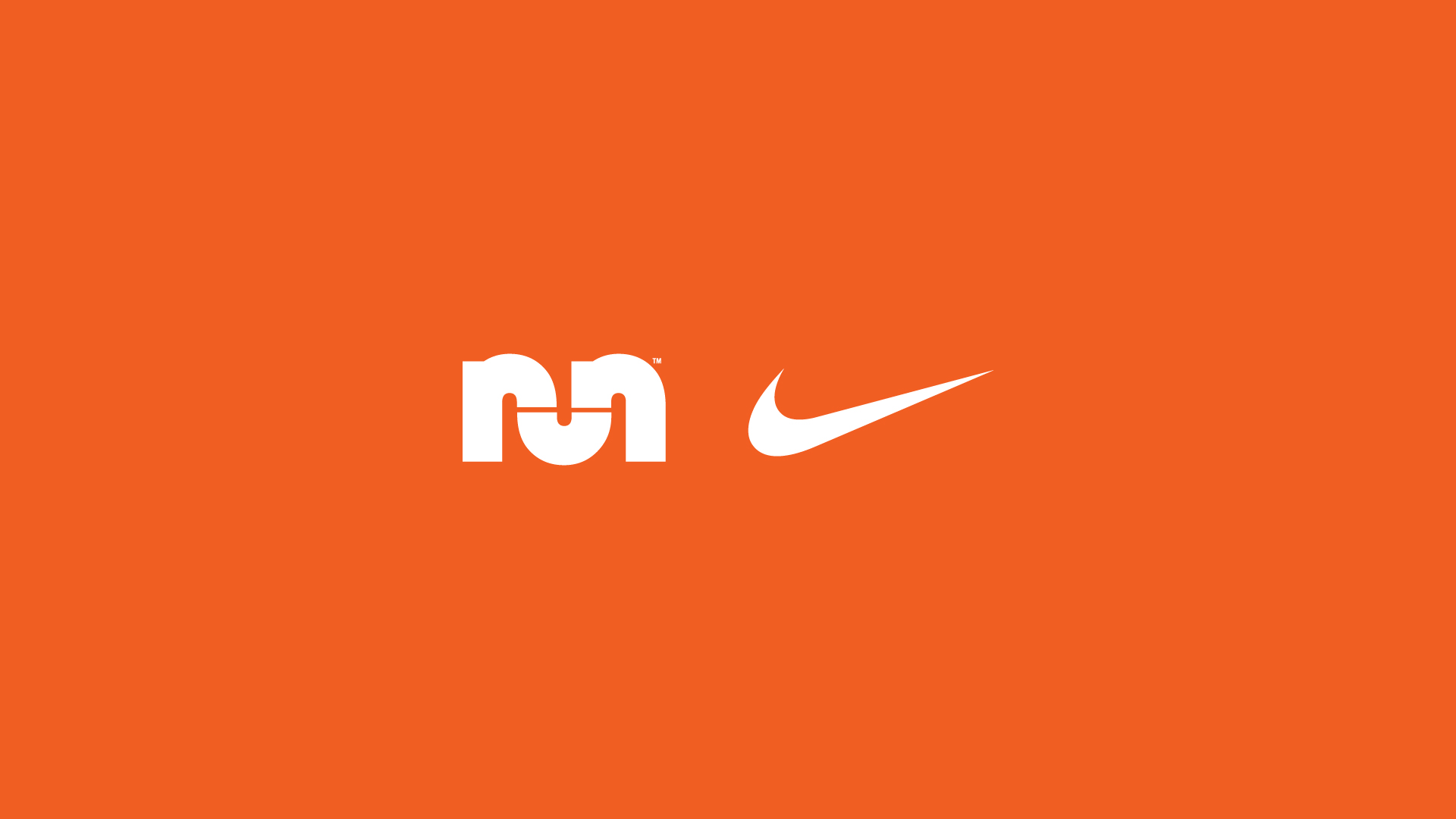
We independently review everything we recommend. When you buy through our links, we may earn a commission.
Let’s get into the best Nike running shoes right now
We’ve picked out some faves for the roads, trails, and race day
If we missed a favorite of yours, let us know in the comments
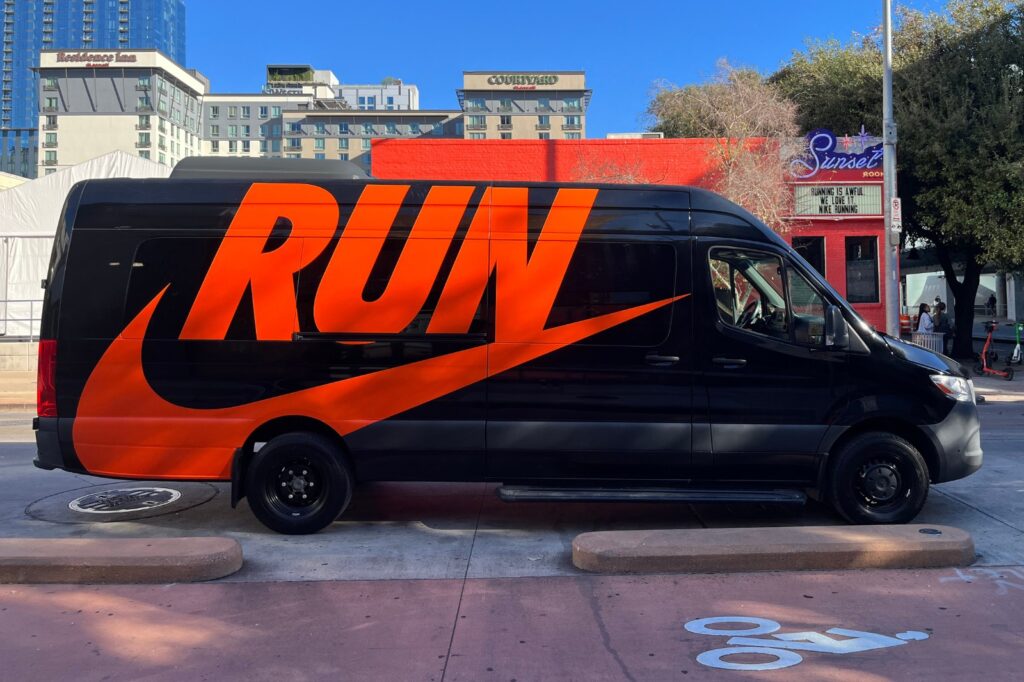
Ahh, new shoe day, there’s not much better. However, if you’re looking to pick up a new pair of Nike running shoes, then you might be overwhelmed by the number of options. There are like 90 types of padding, just as many materials, and a whole rainbow of colorways to pick from. Not to mention an entirely different set of shoes for life on the trails. We’re here to help you narrow it down with our handy guide to the best Nike running shoes you can get.
The Beaverton brand has come a long way since its early days as Blue Ribbon Sports, going from selling ASICS Onitsuka out of a trunk to breaking the two-hour marathon barrier with Eliud Kipchoge in 2019. Now, the Swoosh is pretty much the gold standard when it comes to race day, boasting an unbelievable stable of elites outside of the GOAT himself. Nike’s foams just keep getting lighter, its plates bouncier, and its colorways even sweeter — even though we reach for the white-out Proto version any chance we get. We can’t say you’ll break world records with our picks, but you’ll certainly look great and hopefully run a bit better.
We’ve picked our top eight options currently available to keep it simple for us (and for you, too), so let’s hop to it.
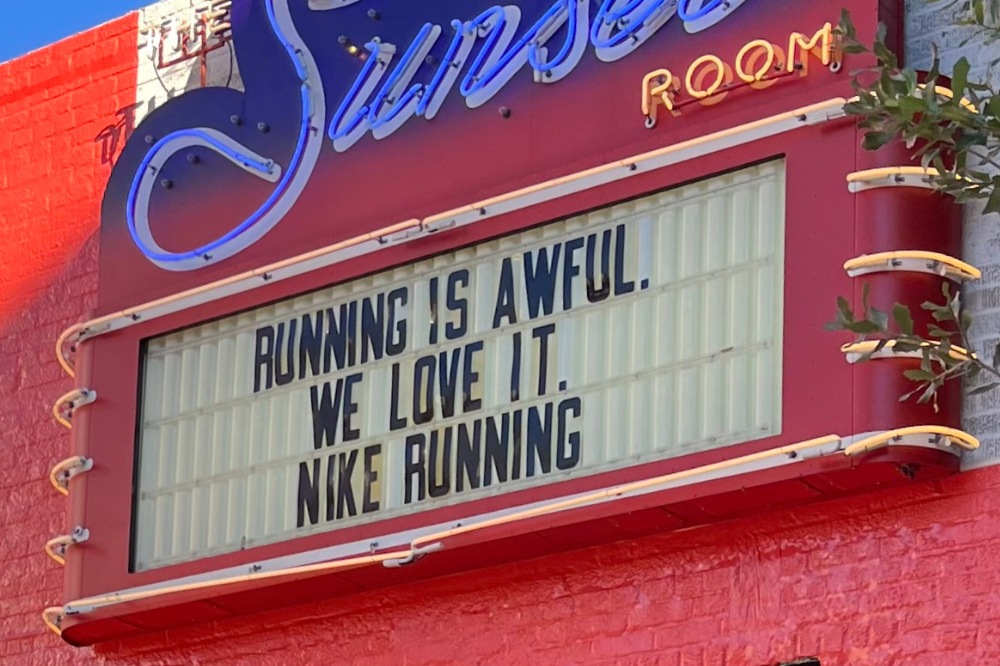
The successor to Nike’s React foam, made with a similar formula but a simplified, greener injection-molding process.
Midsole technology where a Nike Air unit is reinforced by tensil fibers that compress and expand beneath each step, not to be confused with Air Max, which has no tensil fibers.
The lightest, most responsive, softest foam in the Nike lineup, originally introduced in the Nike Vaporfly 4%, ZoomX has an impressive 85% energy return.
Lightweight knit upper material that debuted at the 2012 London Olympics, fits snug to your foot like a sock. Breathable, form-fitting, durable upper material made partly from recycled polyester.
An even lighter version of Flyknit that features in the Alphafly.
Setting a marathon PR
7.8 oz. (221 g) for a US M10.5,
5.8 oz. (164 g) for a US W7.5
40 mm in heel, 32 mm in forefoot (8 mm drop)
The king is back, baby. No, not Elvis — it’s too late for him and for Austin Butler’s portrayal of him — but the Alphafly, on the other hand, is back in a big way. We weren’t shy about the fact that we didn’t like version two (Meg has been hoarding OG Alphaflys like Smaug on a pile of gold), so we won’t be shy about liking version three quite a lot. It’s the biggest departure from the classic Alphafly in terms of aesthetics but also upgrades, so let’s get into it.
For starters, the Alphafly 3 looks nothing like its predecessor. There’s no longer a gap behind the Zoom Air pods, and the entire shape of the midsole has received a full BBL. It reaches its widest point right below where it meets the upper, which is now an even lighter Atomknit 3.0 mesh. Every part of the Alphafly 3 seems tuned towards being lighter and leaner, including the name — you’ll notice that “Next%” is no longer the supershoe’s middle name.
Oh, and by eliminating that weight-saving midsole gap, Nike has vastly improved the transition of the Alphafly 3. It no longer sounds quite like a pair of hooves clippity-clopping across the Baltimore streets, which we can only list as a benefit. Even though Meg’s attempt at CIM in the Alphafly 3 didn’t exactly go to plan, it was hardly because of her feet. In fact, the Alphafly held up its end of the bargain, only for the rest of a very, very tired Meg to go through the pain cave and come out rather scathed.
Shop The Shoe - Men Shop The Shoe - Women
$170
Speedy road workouts, maybe even racing
8.6 oz. (244 g) for a US M9,
7.6 oz. (215 g) for a US W8
40 mm in heel, 32 mm in forefoot
You know the old saying that the third time is the charm, right? Well, in the case of the Nike Zoom Fly, it turns out that sometimes you just have to ignore the first three tries to make the statement true. In fact, for the first several generations of the Zoom Fly, we wanted nothing more than to simply pretend the shoe didn’t exist. The first version destroyed Meg’s feet to the point she never wore it again, and subsequent versions weren’t much better.
But that was then, and this is now. Nike is onto its sixth Zoom Fly, and it finally feels like it has the shoe figured out, which is to say that it finally feels like a baby Alphafly in the very best of ways. No, it’s not a straight-up dupe, Nike wouldn’t step on its own toes like that, but the Zoom Fly pairs soft, bouncy ZoomX foam with a more stable SR02 carrier that gives the trainer plenty of pop without feeling quite as wiley as many racers. Meg also noted that the newly revamped upper feels a bit more like that of a racing shoe, but Nike hasn’t had to strip away all of the padding to save weight, resulting in a bit more comfortable of a ride.
Over on Thomas’s side, he actually picked up the Zoom Fly 6 with his own money, which means he got to snag the sweet, sweet Kipchoge edition. It’s decked out with red mud details and clever Easter eggs like the “No human is limited” signature on one of the toes. He also remarked that the Zoom Fly 6 is lighter than he expected it to be, though in true plated Nike fashion, it still sounds a little bit like a pair of hooves as you roll along on pavement.
Shop The Shoe - Men Shop The Shoe - Women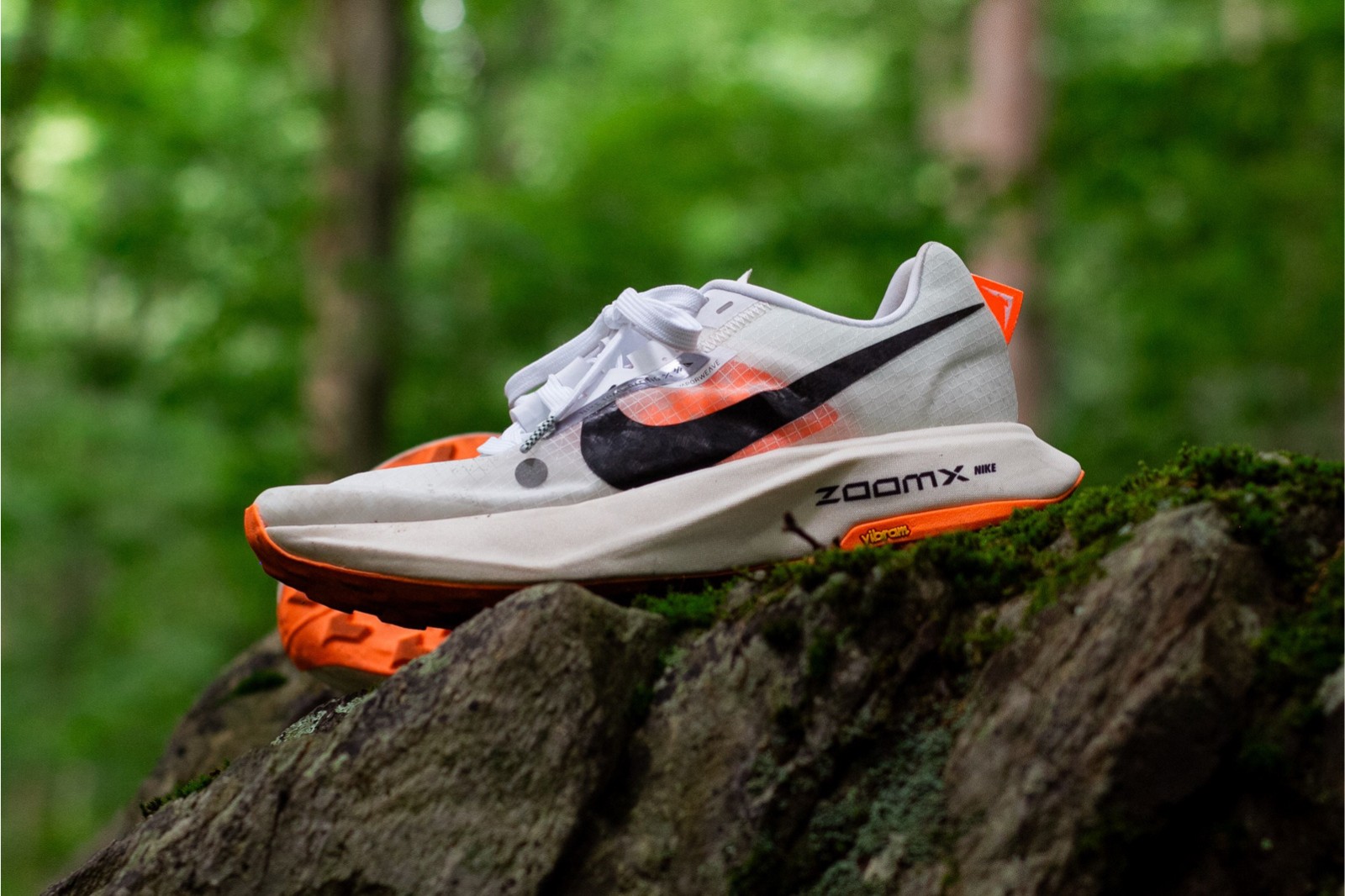
$260
Non-technical racing at any distance
10.6 oz. (300 g) for a US M10,
8.8 oz. (249 g) for a US W8
38.5 mm in heel, 30 mm in forefoot (8.5 mm drop)
We don’t always know how excited to get when Nike drops a trail running shoe. Sure, the colorway is gonna be a banger, but who knows if the outsole rubber will be reliable or rubbish. Thankfully, the Nike Ultrafly put our fears to rest early when it was unveiled with a sweet, sweet yellow logo on the midsole. Yeah, it’s got Vibram, baby. In the Ultrafly’s case, that means Vibram Megagrip, which sticks to pretty much everything you put your feet on.
Outside of the vastly improved outsole material, the Ultrafly is built up like a Vaporfly for the wild side. It has a carbon Flyplate tucked into the fabric-wrapped ZoomX midsole, a water-resistant (or at least water-shedding) Vaporweave upper, and the white, black, and orange Proto colorway that we love so much. Adding to the positives, Robbe was happy to point out that the Ultrafly has a wider platform than we’re used to seeing from Nike’s racing shoes, so it doesn’t feel like you’re racing on a razor blade.
We’ll readily admit that we prefer the Ultrafly for a very specific type of terrain — we’re talkin’ fire roads and light trails. After all, it’s tough to unleash a superfoam like ZoomX when you’re worried about each and every footfall, but you can really let the Ultrafly sing once the terrain opens up. The inherent instability of Nike’s top-shelf foam means that any iteration will have some trouble with highly technical trails like the Appalachian Trail, but don’t let that stop you from lacing up the Ultrafly for something like a rail-trail half marathon.
By the way, we do expect a second Ultrafly to land sooner rather than later, we just don’t know exactly when that might be.
Shop The Shoe - Men Shop The Shoe - Women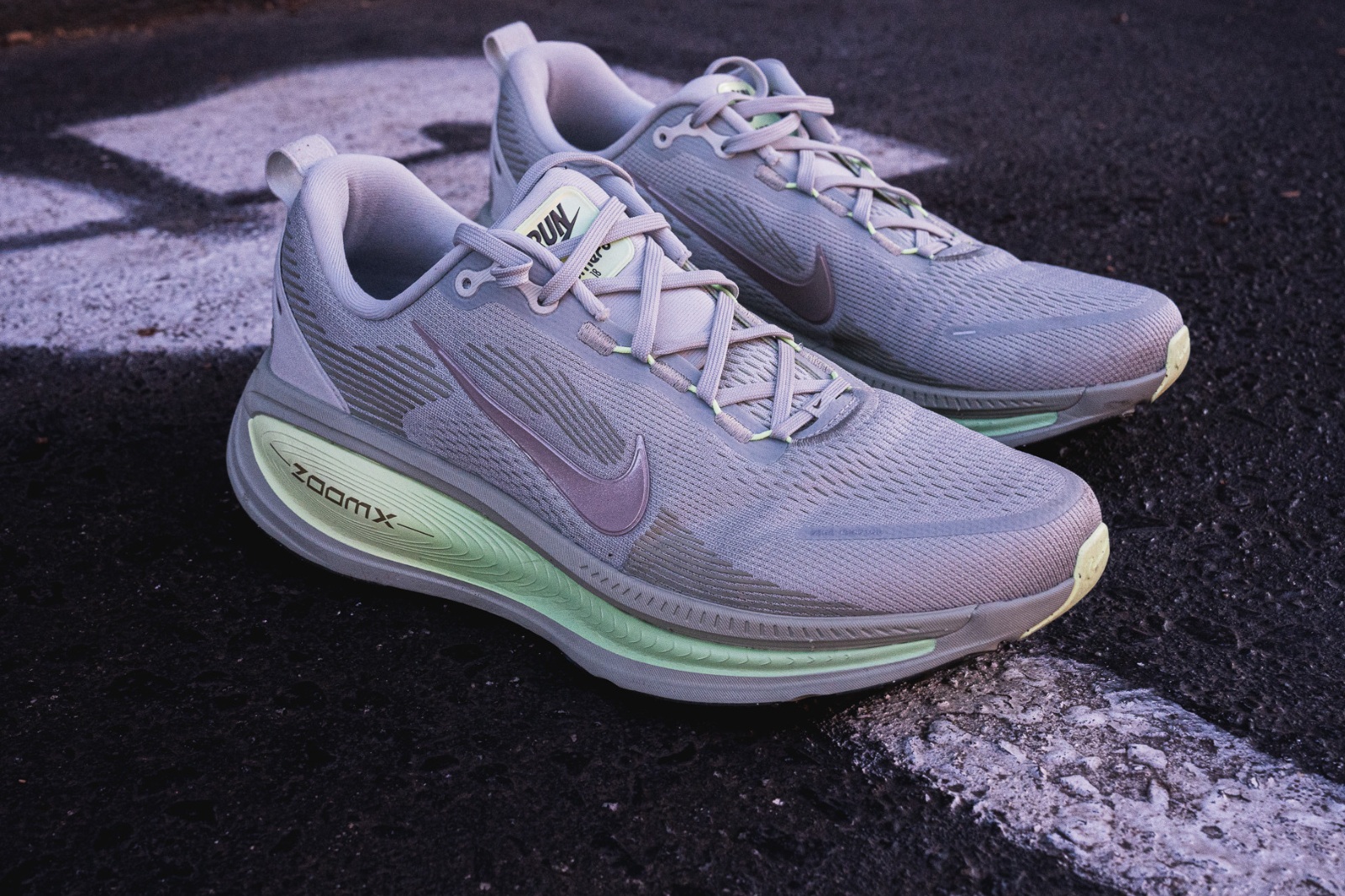
$150
Long runs, daily training
10.6 oz. (300 g) for a US M10,
8.7 oz. (243 g) for a US W8
39.5 mm in heel, 30 mm in forefoot (9.5 mm drop)
Ya know what? The Nike Vomero gets a bad rap. Not because it’s a bad shoe, but because it just doesn’t have the same legacy or longevity as the Pegasus. Well, we think that should change because this just might be Nike’s more enjoyable daily trainer. Put simply, it’s just a bit more exciting than its winged cousin, thanks to its reworked duo of ZoomX and ReactX in the midsole (so long, Cushlon 3.0).
On top of the revamped, pepped-up foam, the new Vomero 18 simply looks much more wearable than its predecessor. Nike made all of its colorways more vibrant, sprinkling hits of Dusty Cactus and Siren Red in among the basic blacks, grays, and navys. In fact, it kind of feels like Nike is using the Vomero 18, which is considered the base model in its Max Cushion trio, as its answer to the crossover hype that Hoka achieved with the Bondi 8.
Oh, and despite being the “base” model, there’s nothing basic about the Vomero’s structure. It has a sky-high 46 mm of foam in the heel to guarantee that you almost never feel the pavement beneath your feet. Yes, there should be a Vomero Plus and Vomero Premium coming down the line, too, though we have no idea how Nike will out-max itself. When it does, we’ll be there to get the miles in. By the way, we always love it when Nike reverts to its original waffle-texture rubber, so that’s another reason to check out the Vomero 18.
Shop The Shoe - Men Shop The Shoe - Women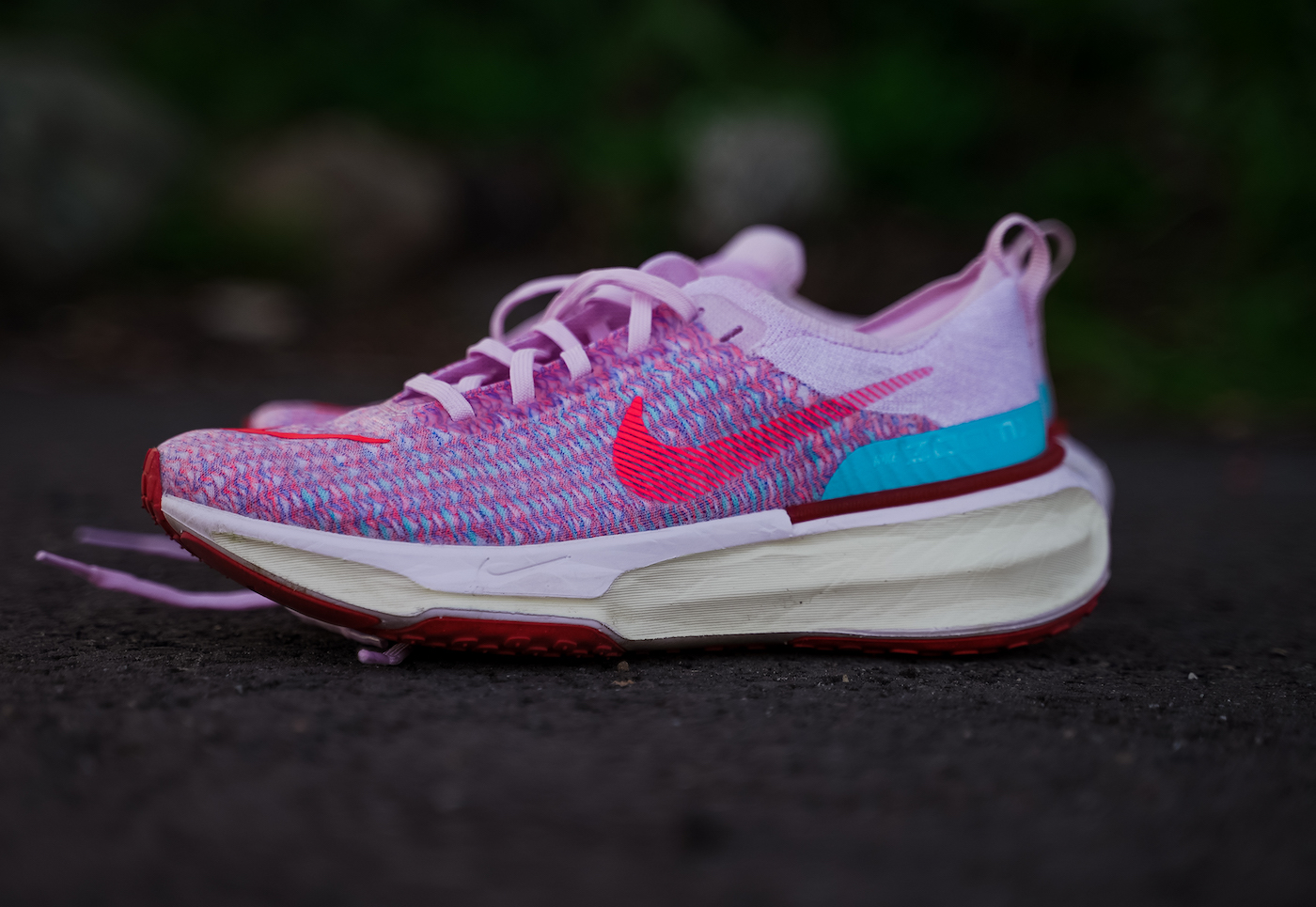
$180
Easy days and long runs
10.6 oz. (300 g) for a US M9,
8 oz. (227 g) for a US W7.5
40 mm in heel, 31 mm in forefoot (9 mm drop)
You want a thicc boi with a swoosh on the side? Well then, have we got the shoe for you. It’s a bouncy little beefcake called the Invincible, and it sits on a mountain of ZoomX foam. Nike’s non-racing ZoomX trainer is in its third generation, and it’s a great option for long, slow miles whether you’re in for a recovery day or on a pre-marathon long run. As always, there are a few changes from the previous version, including a redone upper with a more breathable (but less plush) weave.
Honestly, our whole team is on board with the aesthetic update, especially Meg. She pointed out that the new Invincible 3 no longer looks quite as clunky or bubbly, but still feels just as comfortable. Nike reworked the midsole geometry, using careful shaping to maintain the needed stability while also reducing the amount of foam needed for each pair of shoes.
Unfortunately, our reviewers ran into a bit of heel slippage in the Invincible 3, most likely due to the wider opening and slightly different tongue design. Robbe, in particular, resorted to thicker socks, heel-lock lacing, and a few other tricks to no avail. You might have some luck if you drop down half a size, but keep in mind that Nike’s shoes don’t run as long as those from Adidas, so you might find your toes getting pinched.
Also, as you might have guessed from the comment about Nike’s new running shoe structure above, the Invincible is poised to get the short end of the stick. It won’t be receiving a fourth version, but will instead be folded into one of the other verticals — likely joining the Vomero family. So, farewell, Invincible, may you and your miles rest in peace.
Shop The Shoe - Men Shop The Shoe - Women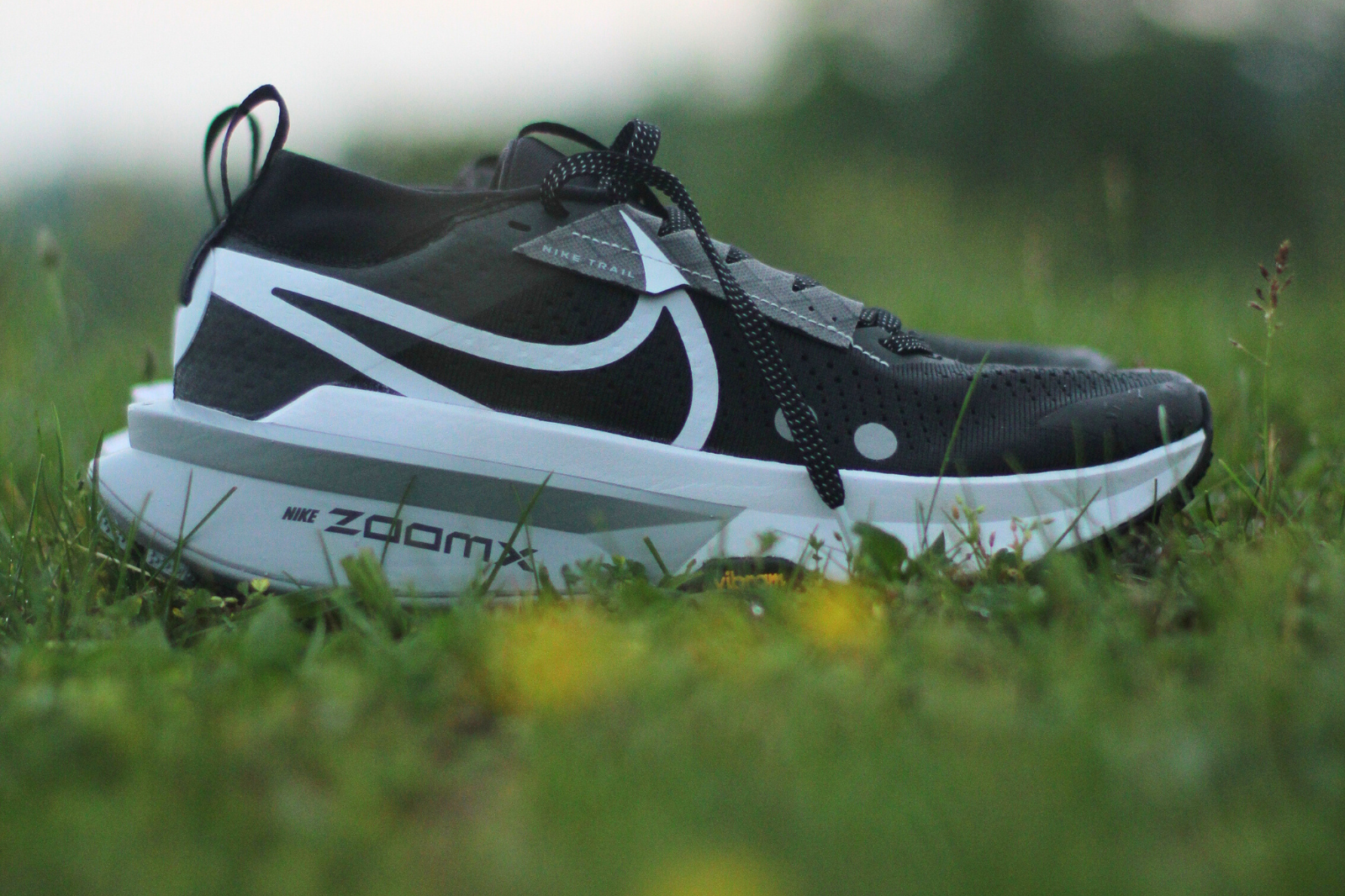
$180
Tackling fire roads at top speed
10.8 oz. (306 g) for a US M9,
9.4 oz. (266 g) for a US W8
39 mm in heel, 35 mm in forefoot (4 mm drop)
Let’s head back to the trails for a little more fun on the wild side, shall we? Nike’s Zegama 2 is the follow-up to its first high-speed trail shoe of the same name, and at a glance, it looks almost identical. However, there’s a bit more at play in this ZoomX-stacked beast than meets the eye. For starters, yes, it does indeed look very similar to the first Zegama, but that’s probably the biggest feather in Nike’s cap — it makes damn good-looking shoes.
Outside of that, the thing we want to draw your eye to is the piece of the Zegama 2 that touches the ground. We’re talking about where the rubber meets the fire road, as it were. Yes, this is the second Nike Trail offering to embrace the sweet, sweet Vibram Megagrip formula in place of whatever the Swoosh settled on as its in-house compound. The result is a trail runner that actually feels capable of grippin’ and rippin’ on the right type of terrain. If there’s one problem with the Zegama 2, though, the terrain it is most comfortable on probably doesn’t need Vibram grip. With this much ZoomX underfoot, it’s not the most stable of shoes across technical terrain, though it’s an absolute blast across fire roads, wide trails, and muddy city streets.
Ultimately, if you’re after a fun, bouncy Nike trail shoe, the Zegama 2 is a great option. It’s a much more affordable option than the Ultrafly without shifting away from ZoomX. Sure, it skips the carbon fiber plate, but you’re also saving around $80.
Shop The Shoe - Men Shop The Shoe - Women
$140
Daily training
10.4 oz. (296 g) for a US M10.5,
8.6 oz. (243 g) for a US W7.5
37 mm in heel, 27 mm in forefoot (10 mm drop)
Lordy, lordy, the Pegasus is 40 plus one. That’s not a joke, somehow, Nike’s signature running shoe is old enough to be my dad. Alright, that’s not true — my dad didn’t have me at 15, but still. Is it the most exciting daily trainer? No, probably not, but man, the Pegasus has a devoted core of truthers who lace it up every single day. It’s one of those shoes that, if it works for you, it just works.
And, although there wasn’t much to wax poetic about on the previous Pegasus 40, version 41 is a bit more exciting. It swaps the React foam for a newer, bouncier ReactX mixture that Nike claims returns more energy with a 43% reduction in carbon footprint. Whether or not that’s true for everyone, we don’t know, but we’ll at least applaud Nike for trying to go green. There are also Air Zoom units in both the heel and forefoot, which is yet another change in the revolving door of just how much Air is in the Air Pegasus.
As Thomas put it, if the Pegasus 40 were a car, it would be a Honda Civic or a Toyota Camry. You can be damn sure it’s going to get you where you wanna go, even if it doesn’t hit 100 miles per hour.
Shop The Shoe - Men Shop The Shoe - Women
$150
Light to moderate trail adventures
10.1 oz. (286 g) for a US M9, 8.6 oz. (244 g) for a US W8
37 mm in heel, 27.5 mm in forefoot (9.5 mm drop)
Of course, what list of the best Nike running shoes would be complete without an everyday option for the trails? Like its road-ready counterpart, the Pegasus Trail 5 might not be setting the world on fire, but it makes up for it with rock-solid comfort and everyday reliability. No, it doesn’t have a Vibram outsole — that would be too ambitious for Nike at this price point — but we find that it’s able to handle all manner of gentler trails and easily crosses over for a little bit of work on the roads.
Also, I mean, how can you find a better-looking daily trainer than this? We’ve praised Nike’s trail designs for several years, and the Pegasus Trail 5 manages to find just the right mix of style and function. It brings several new colorways to the table with Flywire woven into the upper to provide enhanced lockdown. Nike even swapped out its previously terrible outsole rubber for a new All Terrain Compound (usually called ATC), which is much better than the previous coverage.
We think that the switch from React to ReactX underfoot has made the Pegasus Trail 5 a bit less stable than its predecessor, but the rest of the improvements are more than worth the trade. By the way, there’s also a Gore-Tex version if you’re looking for some muddy runs in the spring and summer months.
Shop The Shoe - Men Shop The Shoe - Women
$260
Race day when every single gram matters
6.4 oz. (184 g) for a US M10.5,
4.9 oz. (139 g) for a US W7.5
36 mm in heel, 30 mm in forefoot (6 mm drop)
Last, and certainly not least, we have the featherweight fighter. The king of the course. The racer that other racers dream of… the Nike Vaporfly 4. Like its Alphafly sibling, the Vaporfly got a bit of a facelift heading into version three, and it’s been smoothed out for version four. The angular midsole has been replaced by gentle curves that probably make it a touch more aerodynamic but also take away some of its racing aggression.
As for the actual feel of the shoe, ZoomX is still ZoomX. You know it’s fast, you know it’s bouncy, and you know that stability is towards the bottom of Nike’s list of priorities. Robbe pointed out in his review that this flavor of ZoomX might not be the most aggressive that Nike has unleashed, but it’s still fairly smooth through the stride and should work brilliantly for racing up to about the half-marathon distance — it feels like Nike is saving the most iconic race for its Alphafly.
Also, shout out to Nike for only raising the price of the Vaporfly by a measly $10 over eight years. Sure, it’s still pretty expensive at $260, but that’s some impressive consistency when running shoe technology has come so far. That said, Robbe had a little trouble achieving top-tier lockdown in his pair of the Vaporfly 4, so you may want to try on Nike’s featherweight fighter before you splash the cash.
Shop The Shoe - Men Shop The Shoe - WomenHave something to say? Leave a Comment
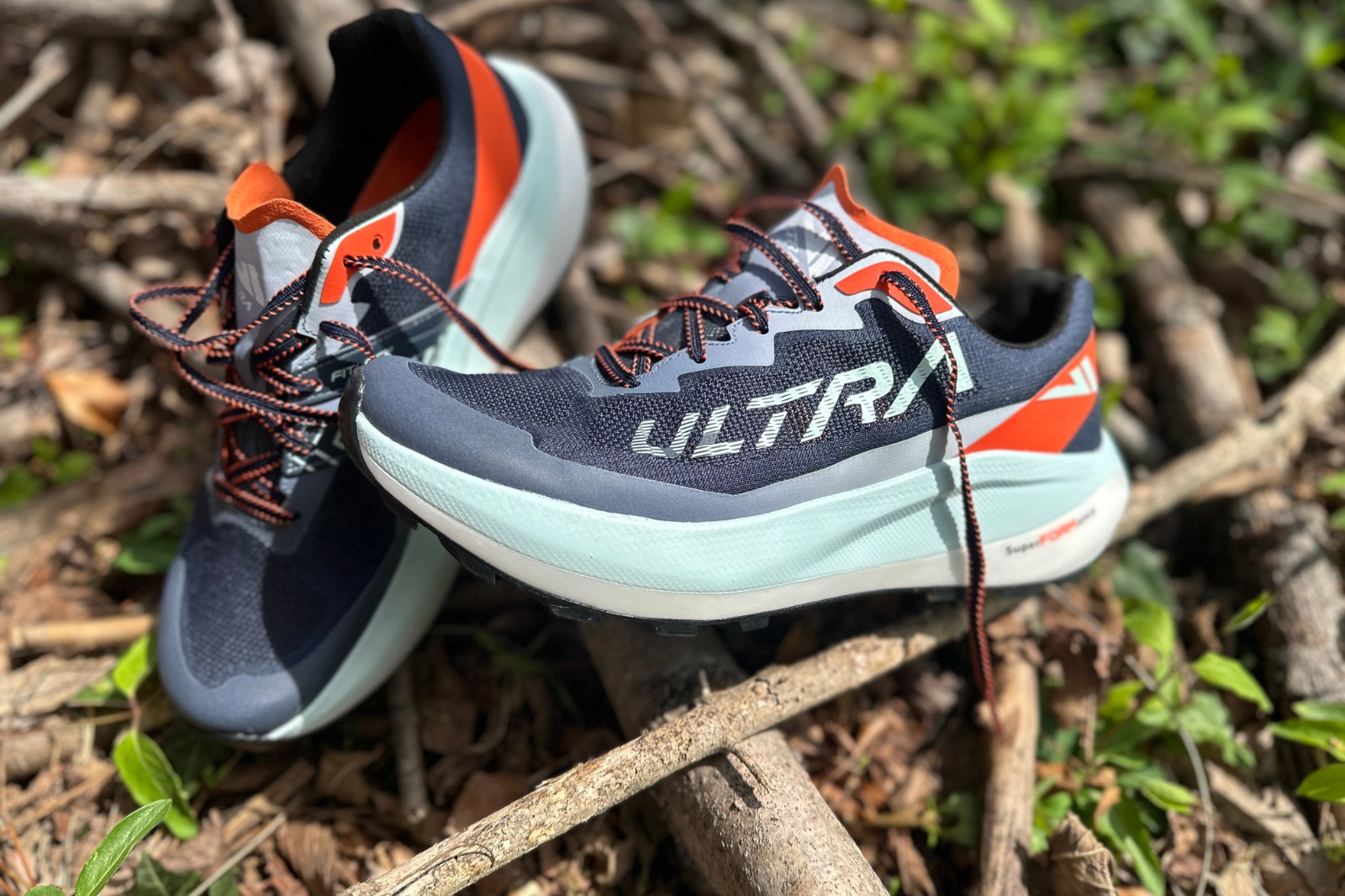
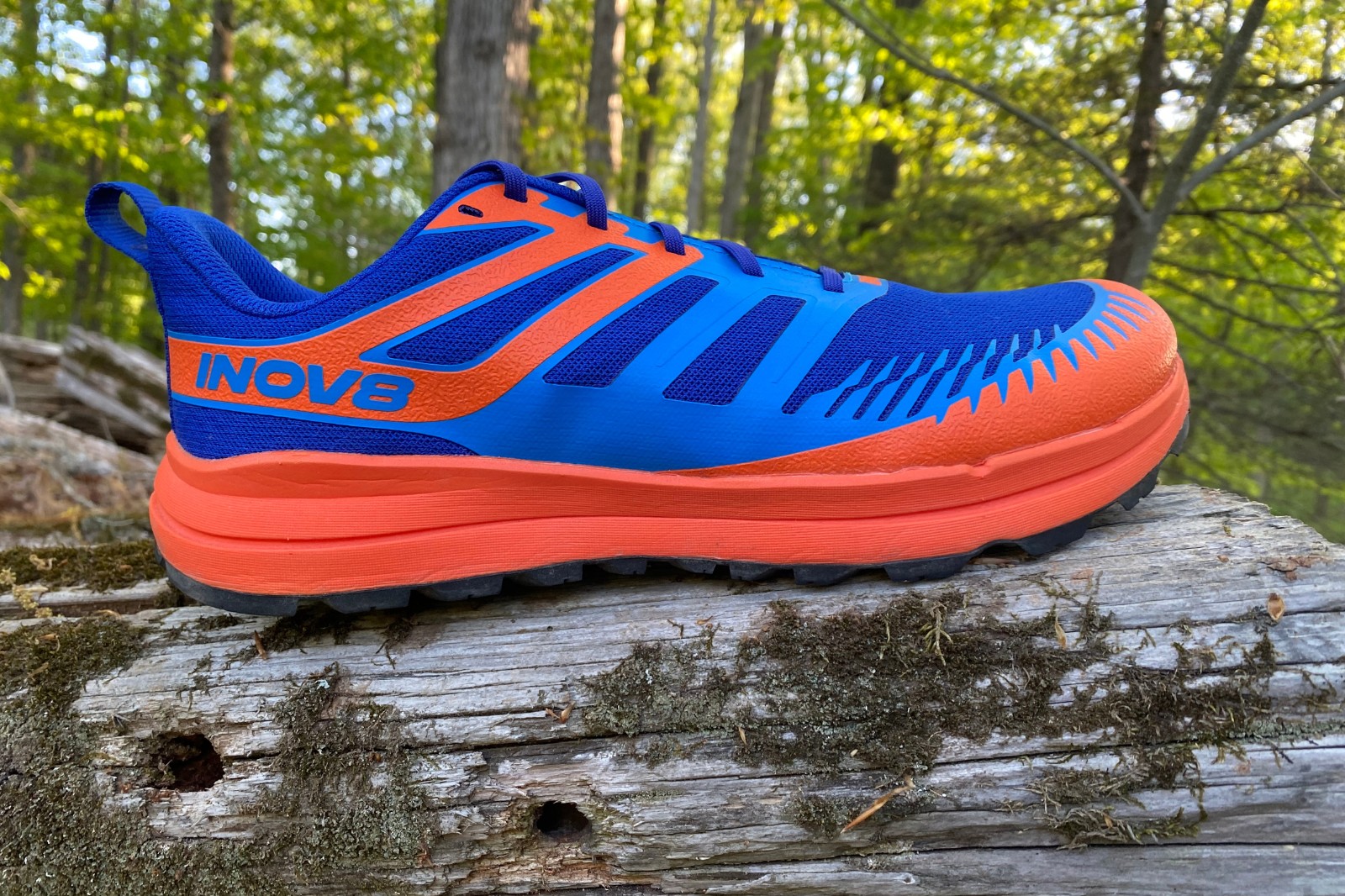
It helped me alot to know about running shoes by Nike. Thanks for the information you shared.
Thanks for reading!
You forgot the Structure (almost everyone usually does). I know that traditionally it hadn’t been everyone’s cup of tea, but the last few versions have been outstanding. It’s also a mild guidance shoe now, rather than a traditional stability shoe, so it’s softer and should work for a lot more people. It’s about the same price as the Pegasus, slightly softer and better cushioned, more stable (duh), and infinitely more comfortable.
So what would be your go-to Nike for speed work days? All the recommendations on this list are either racing, daily, trail, or easy/long days. My current rotation is a pair of new Balance Rebel V2s for speed work, and a pair of Invincible V3s for everything else. It’s about time to replace my Rebels and I’d like to go with something with a swoosh on it.
I’m not really a big fan of the current Pegasus, and I tried a pair of Streakflys but didn’t like that the insoles are glued in – it didn’t help that the insoles in the pair I got were probably 1/2 size too small for the shoe with big gaps around the edges that made them uncomfortable to run in.